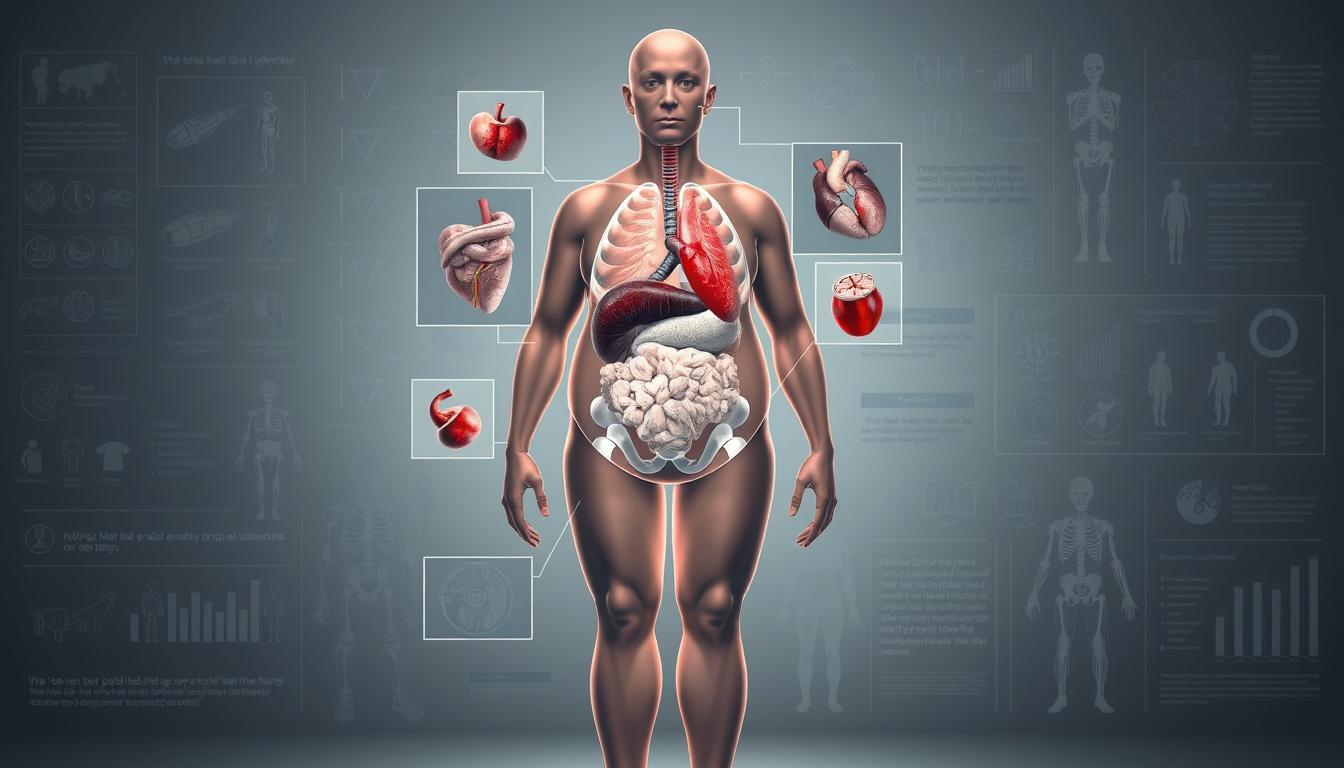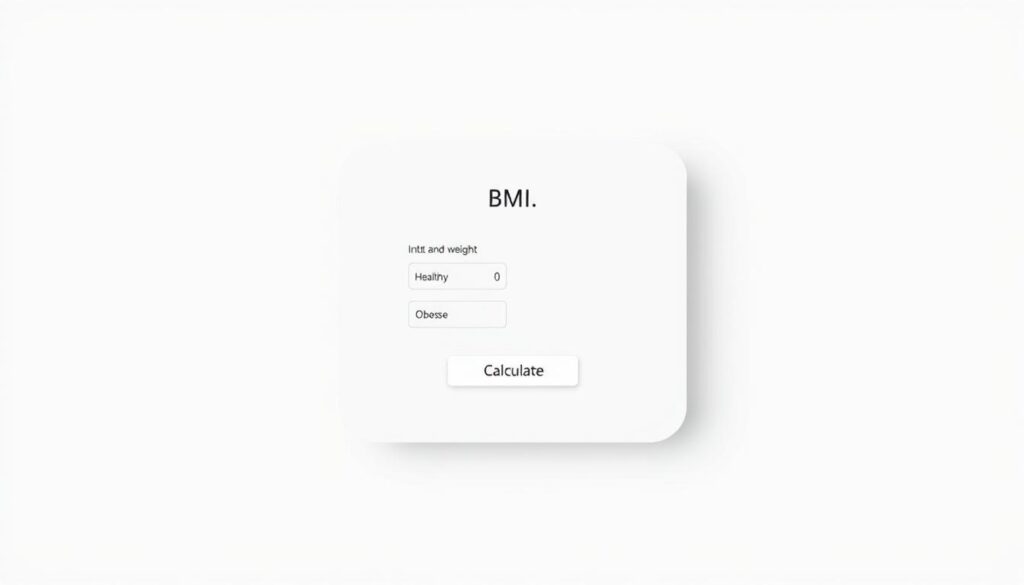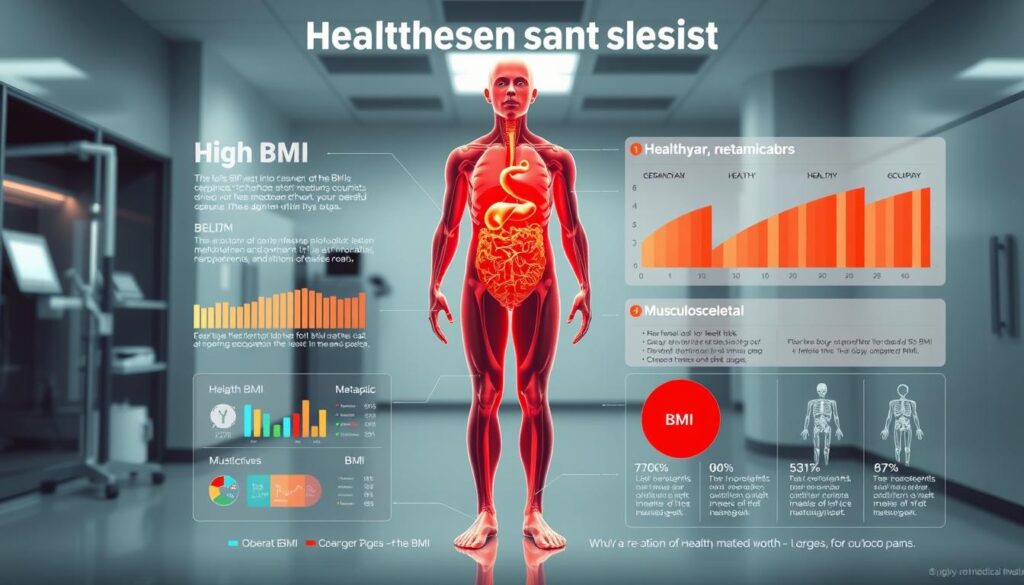Are we overlooking a crucial aspect of our health by not understanding the implications of Body Mass Index (BMI) on our well-being?
The World Health Organization (WHO) says in 2022, 1 in 8 people worldwide were living with obesity. This number has more than doubled since 1990. This shows how important it is to understand BMI and obesity for our health.
As we look at the growing problem of obesity worldwide, it’s clear we need to understand its effects. We’ll talk about how BMI helps us see health risks. We’ll also discuss how to manage our weight to stay healthy.
Key Takeaways
- Understanding BMI is crucial for assessing health risks associated with obesity.
- The global prevalence of obesity has more than doubled since 1990.
- BMI is a significant indicator of potential health risks.
- Managing weight effectively can reduce the risks associated with obesity.
- Recognizing the importance of BMI can lead to better health outcomes.
What is BMI and Why is it Important?
BMI, or Body Mass Index, is key in health checks. It shows health risks tied to weight. It’s a simple way to see if your weight is healthy for your height.
Definition of BMI
Body Mass Index (BMI) is found by dividing weight in kilograms by height in meters squared (kg/m^2). It helps figure out if your weight is healthy for your height.
Adults are put into weight categories based on BMI. These include underweight, normal weight, overweight, and obese.
How to Calculate Your BMI
It’s easy to find your BMI. You can use a BMI calculator or do it manually. The formula is: BMI = weight (kg) / height (m)^2. Online BMI calculators make it even easier.
| BMI Category | BMI Range | Health Risk |
|---|---|---|
| Underweight | Less than 18.5 | Malnutrition, Osteoporosis |
| Normal Weight | 18.5 – 24.9 | Low risk |
| Overweight | 25 – 29.9 | Moderate risk of heart disease, diabetes |
| Obese | 30 or greater | High risk of heart disease, diabetes, certain cancers |
Limitations of BMI
BMI has its downsides. It doesn’t measure body fat directly. So, athletes or those with muscle may have a high BMI without being overweight. On the other hand, older people or those with less muscle may have a low BMI without being underweight.
For a better look at your health, use a BMI calculator that considers age, gender, and more. This gives a clearer picture of your health risks.
The Link Between BMI and Obesity
Obesity, measured by BMI, is a big health risk. It’s important to know its levels and what they mean. The World Health Organization (WHO) says being overweight is a BMI of 25 or more. Obesity is a BMI of 30 or more.
Understanding Obesity Classifications
Obesity is split into classes based on BMI. These classes show how serious obesity is and the health risks it brings.
- Class 1 Obesity: BMI of 30-34.9
- Class 2 Obesity: BMI of 35-39.9
- Class 3 Obesity: BMI of 40 or higher
Doctors use these categories to figure out the risk level. They then suggest the right treatments.
Health Risks Associated with High BMI
A high BMI raises the risk of serious health problems. The National Heart, Lung, and Blood Institute lists these risks:
- Heart Disease: Too much weight can harm the heart.
- Type 2 Diabetes: Obesity greatly increases the risk of type 2 diabetes.
- Certain Cancers: High BMI is linked to more cancer risks.
Recent Statistics on Obesity in the U.S.
Obesity rates in the U.S. have been going up. More than one-third of adults in the U.S. are obese. This shows we need to keep working on obesity and health problems.
These numbers are key when we plan to fight obesity and encourage healthier living.
How to Maintain a Healthy BMI
Keeping a healthy BMI is key for your overall health. It can be done by eating right and staying active. A healthy BMI helps manage weight and lowers the risk of obesity-related diseases.
Nutrition’s Role in Maintaining a Healthy BMI
Eating a balanced diet is essential for a healthy BMI. Eat lots of fruits, veggies, whole grains, lean proteins, and healthy fats. Try to avoid processed and high-calorie foods that can make you gain weight. For tips on healthy eating, check out the NHLBI’s weight loss resources.
Health experts say a healthy diet is more than cutting out foods. It’s about making lifestyle choices that boost health and well-being.
“The key to successful weight management is not just dieting, but making long-term changes to your eating habits and lifestyle.”
The Impact of Physical Activity on BMI
Regular exercise is also vital for a healthy BMI. Aim for 150 minutes of moderate exercise, 75 minutes of vigorous exercise, or a mix of both each week. Adding strength training helps build muscle, which supports a healthy BMI. For tips on weight loss strategies, look at BMI weight loss strategies.
Setting Realistic Goals for a Healthy BMI
Setting realistic weight goals is crucial for success. Start by checking your current weight and BMI. Aim for a 5 to 10 percent weight loss for health benefits. Break down big goals into smaller steps to stay motivated and track your progress.
By choosing a healthy lifestyle and making lasting changes, you can keep a healthy BMI. It’s about finding a balance that fits you and sticking to it.
Tools and Resources for Managing Weight
There are many tools and resources to help manage weight. These include online tools, mobile apps, and community programs. They all aim to support your weight management efforts.
Popular BMI Calculators
A BMI calculator is a simple tool. It helps you find your body mass index. This is a key indicator of your weight health.
Online BMI calculators are easy to find and use. They are on many health and wellness websites.
Apps for Tracking Nutrition and Exercise
Mobile apps are key for tracking nutrition and exercise. These are important for weight management. They let you log your daily food and activities.
Apps like MyFitnessPal and Fitbit are top choices. They have big databases and are easy to use. They help you track your progress and stay motivated.
Community Support and Programs
Community support is crucial for weight management. Support groups and programs offer encouragement and guidance. They help you achieve your weight loss goals.
Programs like Weight Watchers and local fitness classes are great. They provide a structured environment. Here, you can learn healthy habits and get support from others with similar goals.
| Resource Type | Description | Benefits |
|---|---|---|
| BMI Calculators | Online tools for calculating body mass index | Quick assessment of weight status |
| Nutrition and Exercise Apps | Mobile apps for tracking diet and physical activity | Personalized insights into eating habits and exercise routines |
| Community Support Programs | Support groups and structured weight loss programs | Motivation, guidance, and community support |
Infographic Overview: BMI and Obesity Trends
Visuals help us understand BMI and obesity better. Infographics make complex data easy to see. They help us quickly get the main points.
BMI Categories Explained
The CDC breaks BMI into ranges. These include underweight to obese. An infographic shows these categories. It helps people know their BMI status and the health risks of obesity.
Obesity Statistics in the U.S.
Recent U.S. obesity stats are alarming. An infographic on these numbers shows obesity’s big impact. It stresses the need for a healthy lifestyle.
Seeing BMI and obesity data helps us grasp their importance. It shows why keeping a healthy BMI is key. It also highlights the risks of high BMI.




